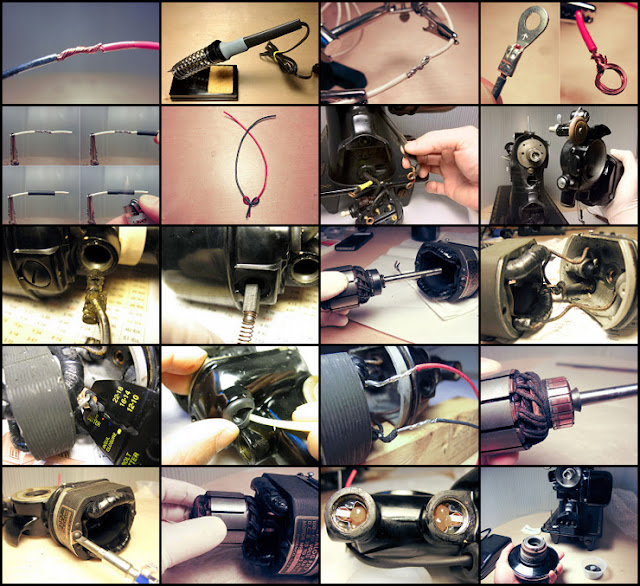| All photos in this entry by Eric from Ottawa |
Eric from Ottawa writes,
[The 15-91 I recently acquired] looks like it's in great shape, but it doesn't run. It has a knee switch rather than a foot pedal and it looks like the motor controller has failed.
To test it, I unscrewed the center of the flywheel so there was no load and plugged it in and got nowhere, even with the knee switch in and fully engaged.
Do you think it's worth re-wiring it to use a standard foot pedal like most of the ones I've seen?
Hi Eric, first off, a little about your machine. The chrome rim on the handwheel plus the design on the faceplate, from the little bit of it that we can see in the photo up top, indicate this machine is from the 1930s or early 1940s (assuming those parts are original). The old-school cylindrical Singerlight visible in the photo below also indicates the machine is from that era.
The “J-“ prefix on the serial number plate indicates your machine was made in Singer’s Canadian plant in Quebec.
Secondly, good on you for trying to run the motor with no load, that’s exactly the correct first step to test out a motor.








